Andes: Sajama National Park (W-Bolivia)
The Bolivian Altiplano is a large semiarid landscape between 3800 and 4300 m elevation, surrounded
by mountain ranges > 5000 m a.s.l. Precipitation of 250-350 mm per year is restricted to the
austral summer (December-March). It is unresolved whether much of that terrain originally was open
Polylepis (Rosaceae) woodland. A treeline in the classical sense does not exist,
but patches of trees can be found up to 4800 m. The restriction of
Polylepis tarapacana woodlands to steep rocky
slopes led to a downslope extension of the alpine zone (similar to Kilimanjaro). It is
unquestioned that the current vegetation reflects the millennial impact of fire management and
camelid grazers such as llamas, alpacas and vicuñas. The sparse herbaceous flora consists of tiny
annuals and tap-rooted perennials as shown here.
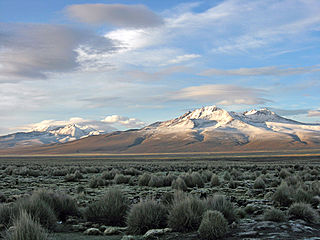
1 -
Altiplano Sajama, 4200 m
1 -
Altiplano Sajama, 4200 m
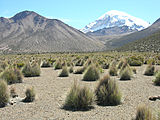
2 -
"Pajonal", semi-arid tussock grassland (Nevado Sajama, 6542 m, in the back)
2 -
"Pajonal", semi-arid tussock grassland (Nevado Sajama, 6542 m, in the back)

3 -
"Bofedales", moist short grassland in river basins
3 -
"Bofedales", moist short grassland in river basins
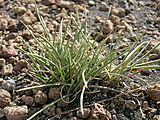
4 -
Festuca orthophylla, "young"
4 -
Festuca orthophylla, "young"

5 -
Festuca orthophylla, "mature"
5 -
Festuca orthophylla, "mature"
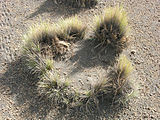
6 -
Festuca orthophylla, "old"
6 -
Festuca orthophylla, "old"
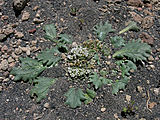
7 -
Calycera pulvinata , "normal" plant
7 -
Calycera pulvinata , "normal" plant

8 -
Calycera pulvinata, with rhizosheath
(sand attached by mucilage), typical for plants in semiarid environments
8 -
Calycera pulvinata, with rhizosheath
(sand attached by mucilage), typical for plants in semiarid environments

9 -
Calycera pulvinata, plant protected by a fence and watered
9 -
Calycera pulvinata, plant protected by a fence and watered

10 -
Viola granulosa, note the camouflage coloration
10 -
Viola granulosa, note the camouflage coloration
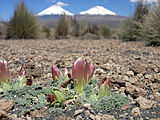
11 -
Nototriche pulverulenta, forming massive and deep
tap roots like most perennial "pajonal" forbs
11 -
Nototriche pulverulenta, forming massive and deep
tap roots like most perennial "pajonal" forbs

12 -
Nototriche cf. rugosa, forming massive and deep
tap roots like most perennial "pajonal" forbs
12 -
Nototriche cf. rugosa, forming massive and deep
tap roots like most perennial "pajonal" forbs
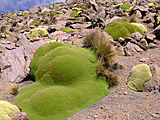
13 -
Azorella compacta, giant cushion
13 -
Azorella compacta, giant cushion
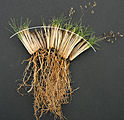
14 -
Deyeuxia brevifolia, line indicates soil surface
14 -
Deyeuxia brevifolia, line indicates soil surface

15 -
Senecio scorzonerifolius, often protected from grazers by
growing within Festuca tussocks (facilitation)
15 -
Senecio scorzonerifolius, often protected from grazers by
growing within Festuca tussocks (facilitation)
















